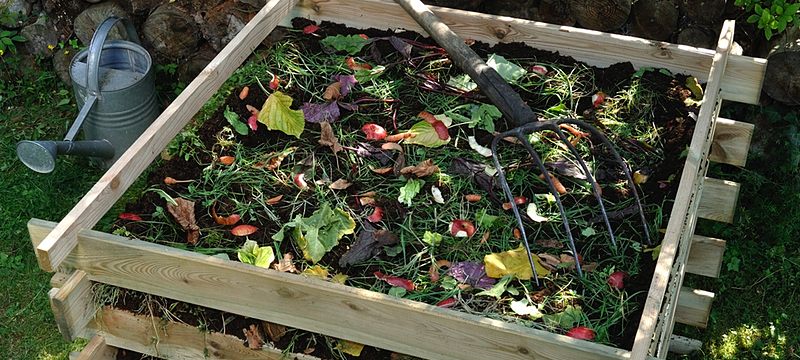If you care about the environment and your garden, why not start composting. It’s fun and makes a lot of sense.
There are many good reasons to compost: save money, save resources, improve your soil and reduce your impact on the environment. More than a satisfying hobby, composting is a win/win scenario – it’s good for you and good for the environment.
Adding compost to your garden will fertilize and actually feeds your soil with a diversity of nutrients and microorganisms that will improve plant growth. Chemical fertilizers on the other hand provide a quick burst of a limited number of nutrients that can wash away into our rivers and streams. Compost also increases soil stability, improves drainage and helps retain moisture.
Want to learn more in 3 easy steps?
Overview
Basic Composting Instructions
The Composting Process in Greater Detail
Overview
- The average US household generates 650 lbs. of compostable materials each year.
- Over 60 percent of what we put in our landfills is organic waste, such as food scraps, yard trimmings and paper, much of which could be recycled by composting.
- Composting saves money. Families reduce their garbage collection bills and municipalities save money on transporting and disposing of waste when organic materials are eliminated from the collection system.
- Compost improves soil, adds important nutrients for plants, and reduces the need for expensive commercial fertilizers.
Basic Composting Instructions
- If compost is properly mixed and maintained, a final product may be obtained in one to two months under optimum summer conditions.
- It should be about half its original size with an earthy smell.
- Proper moisture and air levels are especially important. Dry plant wastes quickly stop composting. Plant materials often dry on the outside while the center remains moist.
- Water consistently to keep compost uniformly moist but not wet.
- Use an aeration tool to reach into the compost to lift and move plant materials. Turn the entire mass occasionally to provide uniform aeration.
- Small amounts of fresh materials may be added to compost, particularly if a vertical composting system is used.
- In other systems, too much fresh material results in a mixture of fully-decomposed and fresh materials.
- If enough material is available, make a new pile instead of combining fresh materials with nearly finished compost.
Tips:
1 – Compost made with manure is questionable for use in food gardens due to newer strains of bacteria that cause food-borne illnesses.
2 – Placing red worms into compost can speed up the process.
3 – Compost can enhance plants’ ability to respond to challenges from insects and diseases.
4 – Do not use meat, dairy, fats, oils, pet waste or weeds for composting.
The Composting Process in Greater Detail
One of the most important steps for evaluating composting options is to become familiar with how the composting process works. Before you begin composting or start a composting program, you should understand the five primary variables that must be “controlled” during composting. These include the following:
- Feedstock and nutrient balance. Controlled decomposition requires a proper balance of “green” organic materials (e.g., grass clippings, food scraps, manure), which contain large amounts of nitrogen, and “brown” organic materials (e.g., dry leaves, wood chips, branches), which contain large amounts of carbon but little nitrogen. Obtaining the right nutrient mix requires experimentation and patience and is part of the art and science of composting.
- Particle size. Grinding, chipping, and shredding materials increases the surface area on which the microorganism can feed. Smaller particles also produce a more homogeneous compost mixture and improve pile insulation to help maintain optimum temperatures. If the particles are too small, however, they might prevent air from flowing freely through the pile.
- Moisture content. Microorganisms living in a compost pile need an adequate amount of moisture to survive. Water is the key element that helps transports substances within the compost pile and makes the nutrients in organic material accessible to the microbes. Organic material contains some moisture in varying amounts, but moisture also might come in the form of rainfall or intentional watering.
- Oxygen flow. Turning the pile, placing the pile on a series of pipes, or including bulking agents such as wood chips and shredded newspaper all help aerate the pile. Aerating the pile allows decomposition to occur at a faster rate than anaerobic conditions. Care must be taken, however, not to provide too much oxygen, which can dry out the pile and impede the composting process.
- Temperature. Microorganisms require a certain temperature range for optimal activity. Certain temperatures promote rapid composting and destroy pathogens and weed seeds. Microbial activity can raise the temperature of the pile’s core to at least 140° F. If the temperature does not increase, anaerobic conditions (i.e., rotting) occur. Controlling the previous four factors can bring about the proper temperature.
